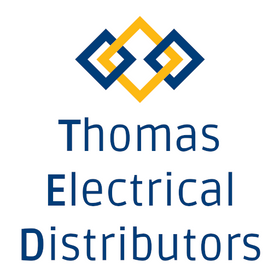Type A RCBOs - A Complete Guide
Type A RCBO's

Type A Residual Current Circuit Breakers with Overcurrent Protection (RCBOs) are crucial components in electrical installations, designed to provide both protection against overcurrent and detection of earth faults. In this article, we will delve into the technical aspects of Type A RCBOs, their importance in meeting wiring regulations, and their compliance with safety standards.
Technical Information
Type A RCBOs combine the functions of a residual current device (RCD) and a miniature circuit breaker (MCB) into a single device. They offer protection against earth leakage currents and overcurrents, making them an essential component for ensuring electrical safety.
-
Residual Current Device (RCD) Function: Type A RCBOs incorporate an RCD function, which is designed to detect and interrupt hazardous earth fault currents. An RCD constantly monitors the current flowing in both the live and neutral conductors and trips the circuit when an imbalance is detected. This provides protection against electric shocks caused by faults to earth.
-
Overcurrent Protection (MCB) Function: In addition to the RCD functionality, Type A RCBOs also include an MCB function. This feature protects against overcurrents, such as short circuits and excessive load currents. When the current exceeds the rated threshold, the MCB component within the RCBO trips, interrupting the circuit to prevent damage to the electrical system or devices.
-
Sensitivity to Alternating and Pulsating Direct Currents: One of the distinguishing features of Type A RCBOs is their ability to detect and respond to alternating current (AC) and pulsating direct current (DC) earth leakage currents. This sensitivity is crucial in systems where electronic devices with rectifiers, variable speed drives, or switched-mode power supplies are present.
Compliance with Wiring Regulations
Type A RCBOs are specifically designed to meet the requirements outlined in wiring regulations and safety standards. Here's how they ensure compliance:
-
Protection against Electric Shocks: By incorporating the RCD function, Type A RCBOs offer a high level of protection against electric shocks. They detect and respond to earth fault currents as low as 30mA, thus significantly reducing the risk of injury or fatality caused by electric shocks.
-
Enhanced Fire Safety: The MCB function within Type A RCBOs provides overcurrent protection, preventing excessive currents that could lead to overheating and potential fire hazards. By tripping the circuit when an overcurrent occurs, Type A RCBOs help mitigate the risk of electrical fires.
-
Sensitivity to Mixed AC and DC Earth Leakage: Type A RCBOs' sensitivity to both AC and DC earth leakage currents makes them suitable for modern electrical systems, where electronic devices with rectifiers or power supplies that generate pulsating DC currents are commonly used. This ensures comprehensive protection against various fault scenarios.
Conclusion
Type A RCBOs are integral to electrical installations, providing reliable protection against electric shocks, overcurrents, and fire hazards. Their compliance with wiring regulations, including the detection of mixed AC and DC earth leakage currents, makes them an ideal choice for modern electrical systems. Installers and homeowners can have confidence in Type A RCBOs to safeguard lives and property by adhering to the highest safety standards in electrical installations.
Find our full range of Type A RCBO's here!
Bidirectional RCBO's
Exploring Bidirectional Protective Devices
With the rise of alternative energy sources like solar photovoltaic (PV) and energy storage systems, bidirectional power flow has become a crucial consideration for certain protective devices. This guide delves into the selection and installation of protective devices for such sources, as outlined in the recently issued BEAMA bulletin on connecting unidirectional and bidirectional protective devices.
Understanding Unidirectional Protective Devices
Unidirectional protective devices are specifically designed to accommodate power flow in a single direction, typically from the supply to the load. These devices are marked to distinguish between line and load terminals, ensuring correct connection. Examples include single-module residual current breakers with over-current protection (RCBOs) and arc fault detection devices (AFDDs), commonly employing electronic circuits for residual current protection. It's essential to adhere to the manufacturer's connection instructions to ensure proper functionality.
Bidirectional Protective Devices Explained
In contrast, bidirectional protective devices lack markings indicating line and load terminals, making them suitable for power flow in either direction without risk of damage. For instance, traditional electromechanical residual current circuit-breakers (RCCBs) and electronic RCCBs are bidirectional, often not labeled for line or load connections.
Identification and Usage of Protective Devices
Protective devices like miniature circuit-breakers (MCBs), RCCBs, RCBOs, and AFDDs feature markings to differentiate between supply and load terminals, typically indicated by labels like "line" and "load" or directional arrows. However, it's crucial to consult the manufacturer to confirm bidirectional compatibility, especially for devices without explicit markings.
Implications for Existing Installations
When assessing existing installations, such as during electrical installation condition reports (EICRs), it's vital to consider device functionality in case of failure. For TT systems, RCD failure poses safety concerns and warrants immediate attention. Recommendations for improvement align with current standards, but judgment should consider individual circumstances.
Conclusion
In conclusion, bidirectional power flow necessitates careful selection of protective devices for generators and energy storage systems. While RCDs may not be obligatory for PV systems, their application should align with installation requirements and manufacturer guidelines. Selecting the appropriate RCD type and ensuring bidirectional compatibility are critical aspects to consider, emphasizing adherence to manufacturer instructions for optimal device performance.
Find our full range of Bidirectional RCBO's here!

